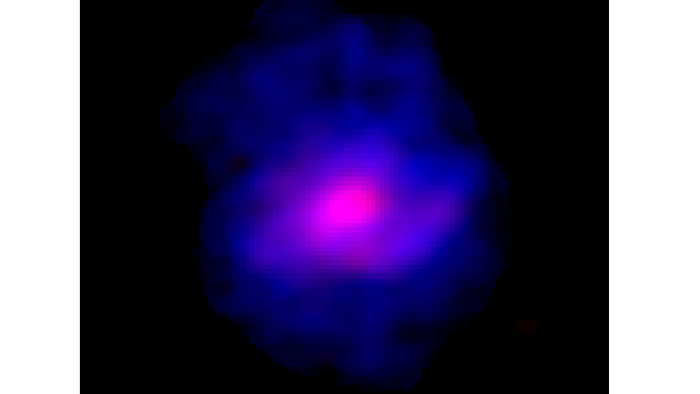A newly discovered galaxy has changed scientists’ understanding of how galaxies are formed – because it appears older than it actually is.
The ‘baby’ galaxy – christened ALESS 073.1 – was formed just 1.2 billion years after the Big Bang occurred.
Yet it took 12.5 billion years for the light that allowed it to be examined to reach us on earth. The team, led by scientists at Cardiff University, used the Atacama Large Array (ALMA) telescope.
According to a study published in the journal Science, the galaxy possesses features usually only seen in much older galaxies.
Dr Federico Lelli, who headed the study, told CJS News: ‘’We are essentially looking back in time when we observe this object. We are looking at a galaxy which is in its very initial stages of formation.’’
The result was one of the sharpest, direct images of an early galaxy ever produced.
Galaxies come in a variety of shapes, sizes and colours, and are made up of different components such as rotating disks, spiral arms, and “bulges”.
“We discovered that a massive bulge, a regular rotating disk, and possibly spiral arms were already in place in this galaxy when the Universe was just 10% of its current age,” said Dr Lelli.
Some mature galaxies, like our own Milky Way, have been known to have spiral arms extending from their central parts, giving them a distinctive spiral shape. But these features were also found in ALESS 073.1.
In other words, this galaxy looks like a grown adult, but it should be just a little child.
Co-author of the study Dr Timothy Davis, from the School of Physics and Astronomy, said: “This spectacular discovery challenges our current understanding of how galaxies form because we believed these features only arose in “mature” galaxies, not in young ones.”
And, about finding life in this new galaxy?
Dr Lelli said: ‘’This is a big question.
“This galaxy is a lot bigger than our own Milky Way. If you think it would be likely for our Milky Way to produce at least one form of intelligent life, it is very likely a much bigger one with thousands of stars like our sun could too.
‘’However, it is highly unlikely we could communicate with that. Light took 12.5 billion years to reach us. So, it’s hard to think how we could.’’

